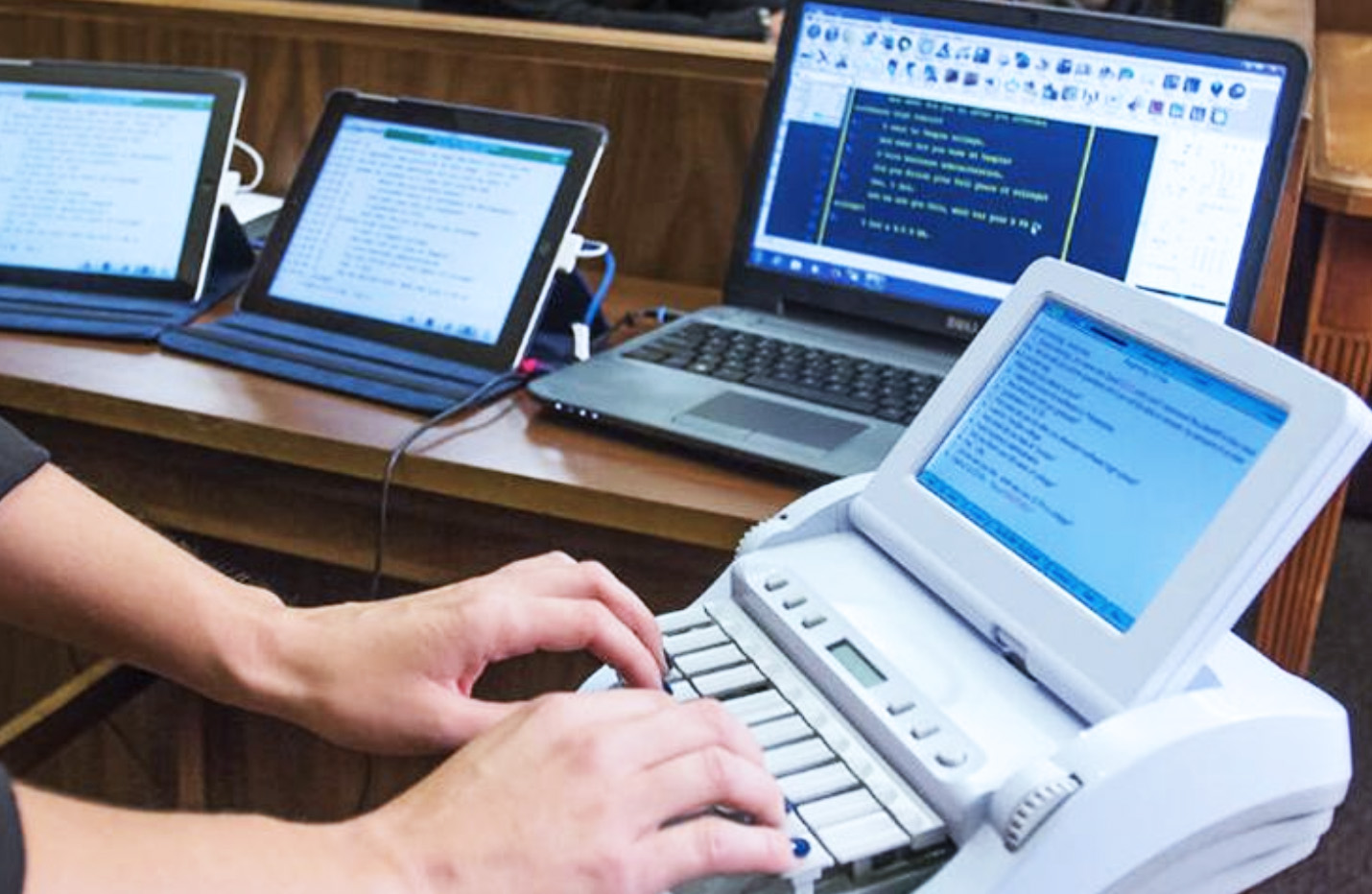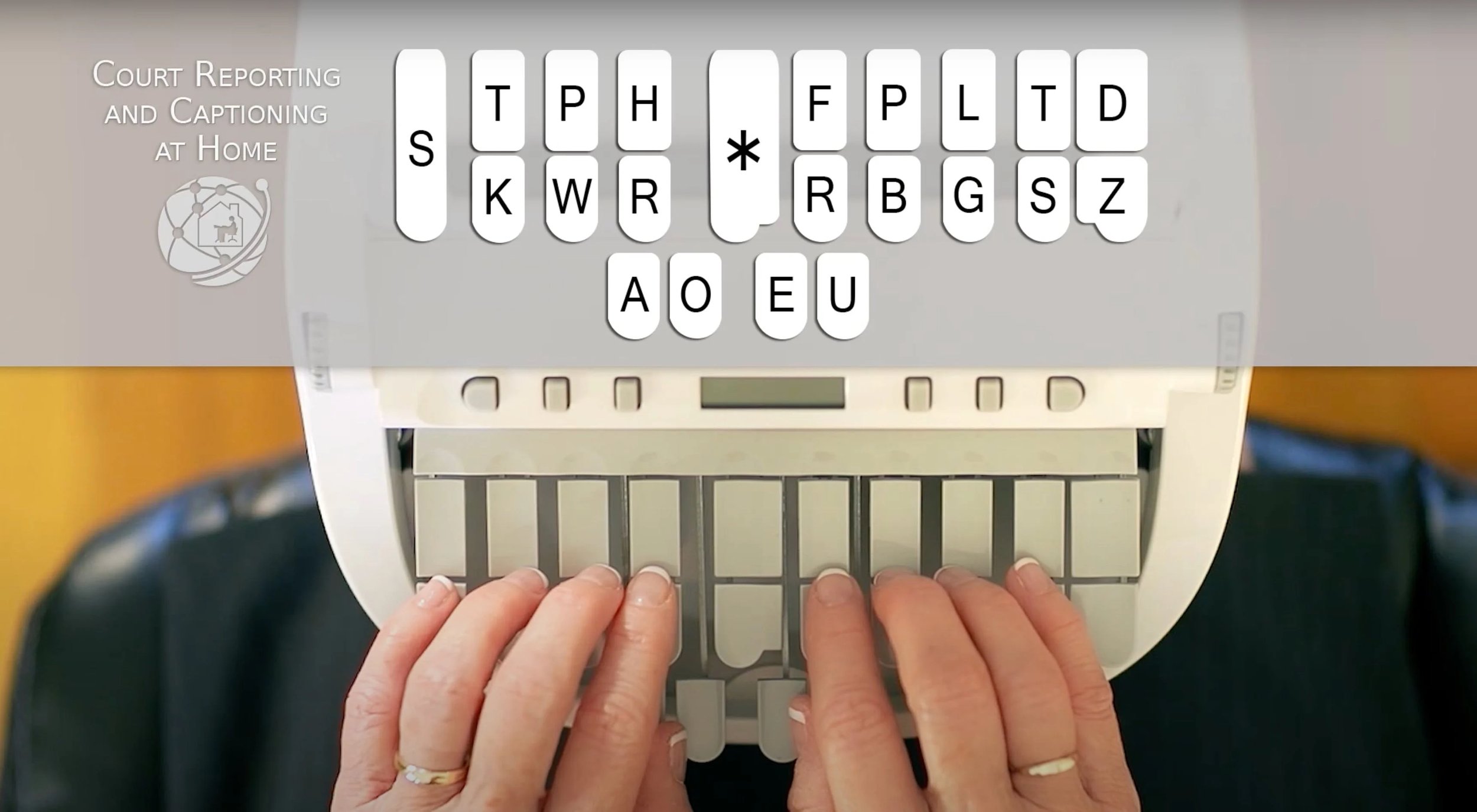Durham court reporting roadmap for new attorneys
Exactly How Court Reporting Works: A Step-by-Step Guide to the Legal Process
Court reporting is a crucial component of the lawful system. It involves a structured procedure that assures precise paperwork of process. From preparation to the final shipment of records, each action is necessary. Understanding how stenotype reporter operate deals insight right into the stability of legal documents. The nuances of their work can greatly affect legal end results, prompting inquiries regarding the innovations and methods they use. What are the certain techniques that specify this profession?
The Duty of Court Reporters in the Legal System
Court reporters play an important role in the lawful system by supplying dependable and accurate records of court proceedings. Their work warranties that every spoken word throughout hearings, trials, and depositions is recorded, which is vital for keeping an official record of occasions. This transcription is basic for appeals, as it enables higher courts to evaluate the process and determine if any errors were made during the trial.
Additionally, stenotype reporter aid in preserving the integrity of the legal process by producing verbatim records that can be described by lawyers, judges, and various other events involved in a situation. They typically make use of specialized equipment and software program to record discussion with accuracy. Past the courtroom, their transcripts can act as essential historic papers, supplying understanding right into judicial process and the legal system's functioning. Ultimately, stenotype reporter add greatly to transparency and accountability in legal matters.
Getting ready for a Court Reporting Session
Preparation is essential for a successful court reporting session, as it guarantees the accuracy and efficiency of the transcription procedure. Stenotype reporter start by assessing instance products, including pleadings and witness lists, to familiarize themselves with the terms and context. They additionally make sure that they have the essential tools, such as steno machines, note pads, and back-up tools, prepared for use.
Prior to the session, interaction with lawful groups is vital. Reporters typically clear up any details demands pertaining to format or liked terminology. Additionally, they might prepare to consult with witnesses or lawyers to talk about the procedures and confirm the timetable. Showing up early to establish the equipment permits for fixing potential technological problems. Overall, comprehensive prep work not only boosts the press reporter's confidence however also adds significantly to generating a accurate and clear document of the legal proceedings.

Catching the Document: Methods and Tools
Making use of advanced methods and dependable devices, stenotype reporter thoroughly catch the spoken word throughout lawful process. They utilize stenography, a method including a specialized machine that allows them to kind numerous sounds all at once, therefore transcribing dialogue in actual time. This equipment, referred to as a steno keyboard, is furnished with secrets that stand for syllables and words, allowing swift and exact input.
Along with stenography, court press reporters might make use of audio recording devices as extra devices. These tools function as back-ups, guaranteeing that no critical info is shed throughout process. Moreover, some reporters include software application that improves their transcription effectiveness, using functions such as voice acknowledgment and automated format.
Appropriate positioning and focus are critical; press reporters should preserve attention on all audio speakers, recording nuances and inflections that add to the document. With a mix of ability and modern technology, stenotype reporter copyright the stability of the legal process by making certain a accurate and comprehensive record of occasions.
Recording the Procedures
Transcribing the process needs stenotype reporter to transform talked discussion into written text with phenomenal precision and rate. This process generally takes place instantly after the recording has been recorded, making use of specialized software application that permits seamless transcription. Court press reporters have to pay attention attentively to the audio, making certain that every word, time out, and inflection is precisely represented in the records.
They commonly rely upon read here shorthand systems, personal transcription abilities, and advanced modern technology to promote this task. The setting in which they work can be sometimes chaotic and busy, as legal procedures often include numerous speakers and technical lingo. Stenotype reporter need to also keep focus to catch nuances in tone and context that might be necessary for the legal document. Ultimately, the accuracy of the transcription is important, as it acts as an official paper for future recommendation in lawful proceedings.
Editing the records and evaluating
The procedure of evaluating and modifying the transcript is crucial for making sure accuracy in court reporting. Court reporters frequently team up with attorneys to make clear any type of uncertainties and verify the accuracy of the tape-recorded declarations. This partnership is important for keeping the honesty of the legal document.
Importance of Precision
Precision functions as the cornerstone of reliable court reporting, as even small errors can considerably alter the significance of legal procedures. The examining and modifying process is important in making certain that records show the spoken word with fidelity. Court reporters carefully verify names, technical terms, and legal jargon to maintain precision. This attention to detail helps avoid misunderstandings that could affect case outcomes. Furthermore, precision cultivates depend on among lawyers, clients, and the court, reinforcing the integrity of the judicial system. Errors can result in appeals or disagreements, making it crucial for press reporters to refine their job completely. Ultimately, the search of accuracy not just improves the integrity of the transcript yet also promotes the requirements of the lawful occupation.
Collaboration With Attorneys
Collaboration in between court reporters and lawyers is essential during the reviewing and editing and enhancing phase of records production. This procedure guarantees that the last document precisely mirrors the spoken word and sticks to legal requirements. Attorneys typically review Learn More Here records for particular terms, context, and any type of potential mistakes that could influence the case. Stenotype reporter depend on lawyers' competence to make clear ambiguous sections or emphasize critical statements. Efficient interaction is key; attorneys may supply comments or demand adjustments, which court reporters need to address without delay. This partnership not only enhances the high quality of the records but likewise adds to a smoother lawful process. Inevitably, collaborative initiatives lead to a precise and reliable document, essential for lawful procedures and future referrals.
Delivering the Last Records to Clients
Upon completion of the transcription process, court press reporters carefully prepare the last document for shipment to their customers. This last transcript undergoes extensive proofreading to assure precision, as any mistakes can greatly impact legal proceedings. Court reporters style the record according to the particular demands stated by the clients or legal companies, including pagination, indexing, and any necessary displays.

Finally, court press reporters may supply a cover letter summing up vital details and providing additional aid if required. This extensive approach assurances that clients obtain a refined, specific, and quickly accessible transcript, essential for their legal demands.
Often Asked Inquiries
What Qualifications Are Required to Become a Court Reporter?
To become a stenotype reporter, individuals normally require a secondary school diploma, conclusion of a court reporting program, and certification or licensure, depending upon state needs. durham court reporting. Efficiency in shorthand and innovation is additionally necessary for success
The length of time Does It Take to Full Court Reporting Training?
Usually, completing court reporting training takes between 18 months to four years, depending upon the program's intensity, the trainee's pace, and the certain requirements of the territory in which they wish to exercise.

What Is the Typical Wage of a Stenotype Reporter?
The ordinary salary of a stenotype reporter differs by location and experience, usually varying from $45,000 to $100,000 annually (durham court reporting). Factors such as specialization and demand can considerably affect their incomes in various regions
Are Court Reporters Required to Have Accreditation?
Court reporters are usually needed to acquire certification, which guarantees they have the essential abilities and understanding for precise transcription. Accreditation demands can vary by state why not find out more or territory, mirroring expert requirements within the legal area.
Can Court Reporters Job From Another Location or Freelance?
Court reporters can work remotely or freelance, providing versatility in their occupation. Several utilize modern technology to transcribe proceedings from various places, permitting diverse opportunities in the legal area while preserving a work-life balance.
Court press reporters play a necessary role in the legal system by supplying precise and dependable transcripts of court process. In addition, court reporters help in preserving the integrity of the lawful procedure by producing verbatim records that can be referred to by attorneys, courts, and other parties included in a case. Utilizing innovative methods and reputable equipment, court reporters carefully capture the spoken word during lawful procedures. Court press reporters need to additionally preserve concentration to record nuances in tone and context that may be essential for the lawful document. To become a court press reporter, individuals typically require a high institution diploma, completion of a court reporting program, and accreditation or licensure, depending on state needs.